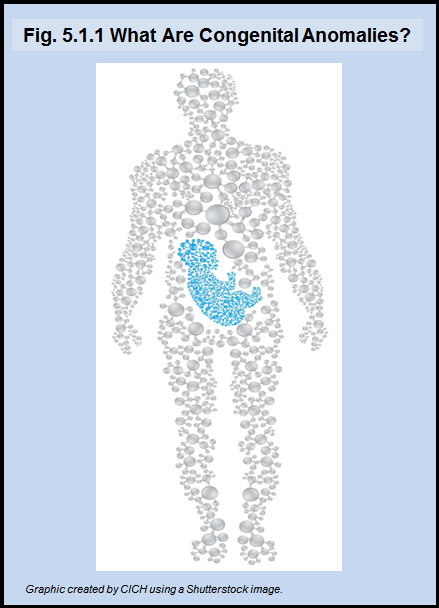What Are Congenital Anomalies?

Congenital anomalies, sometimes called birth defects, happen during prenatal development. They include abnormalities of structure, function, or metabolism. They are present at birth but may not be diagnosed until later in life. They can result in physical or mental disability, affect a child’s development, and, in severe cases, can be fatal.1
Congenital anomalies are a leading cause of death among foetuses and infants2 and can greatly influence quality of life. They are costly to both families and the healthcare system.3
1Definition adapted from Health Canada. Congenital Anomalies in Canada — A Perinatal Health Report, 2002. Ottawa: Minister of Public Works and Government Services Canada, 2002.
2Lowry R, Sibbald B, Bedard T. Alberta Congenital Anomalies Surveillance System Eighth Report 1980–2007. Government of Alberta Report, 1-45. Canadian Perinatal Health Report 2008 Edition (pp. 317). Ottawa: The Public Health Agency of Canada; 2009.
3Public Health Agency of Canada and the Congenital Anomalies Surveillance Network. Towards Enhanced Congenital Anomalies Surveillance in Canada (pp. 1–14). Ottawa; 2008.
